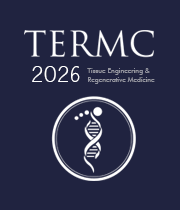Title : Keratin-TMAO wound dressing promote tissue recovery in diabetic rats via activation of M2 macrophages
Abstract:
Impaired wound healing is a major medical specially in diabetic condition. Scientists worldwide are looking for new ways to treat wounds. Many different natural materials such as fibroin, chitosan, collagen or keratin have gained attention for their biomedical properties. In this context, keratin-based biomaterials have gained much attention for their biocompatibility, biodegradability and ability to promote cell growth. In this study we examined keratin dressing supplemented with trimethylamine N-oxide (FKDP-0.1%TMAO) as a wound dressing in rats with pharmacologically induced diabetes. An experimental keratin dressing was formulated from rat fur and subsequently enriched with 0.1% trimethylamine N-oxide. In vivo experiments were carried out using male Sprague–Dawley rats with pharmacologically induced diabetes. In vitro examination showed that obtained dressing is safe, non-toxic and support HaCaT growth (p<0.05). In vivo experiments showed that obtained wound dressing accelerate wound healing on days 4, 7, 14 and 21 post-injury (p<0.05). Histopathological examination showed that FKDP-0.1%TMAO treated wounds faster undergoes epithelialization, the epidermis was thicker and has less blood extravasation compared to control wounds. Moreover in FKDP-0.1%TMAO predominate macrophages, whereas neutrophils predominated in the control wound. Immunofluorescence examination revealed that in FKDP-0.1%TMAO dressed wounds predominant M2 macrophages population (CD163+) whilst the control wound was dominated by pro-inflammatory M1 (CD80+) macrophages. In conclusion, obtained FKDP-0.1%TMAO is safe, non toxic and accelerate full-thickness wound healing in diabetic rats. Furthermore, the ability of the FKDP+0.1%TMAO dressing to modulate the immune response, reducing inflammation, highlights its potential use in the treatment of chronic wounds.



